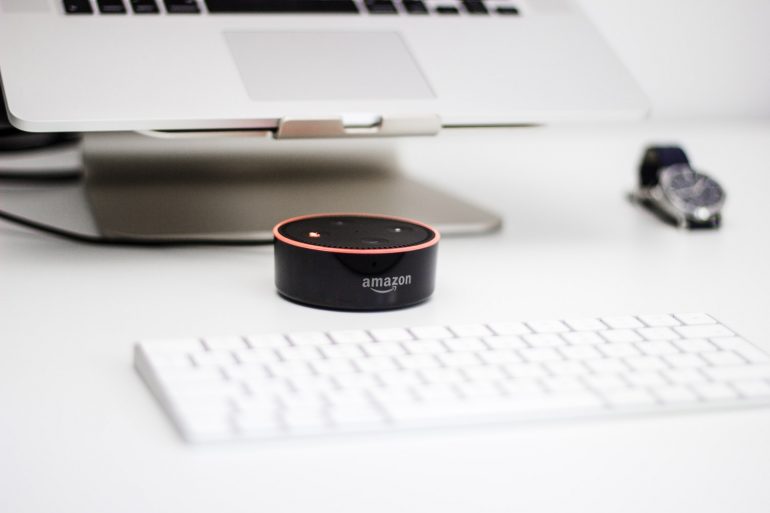
Buy online using his voice.
It may seem insane; and yet, with the development of connected speakers, voice shopping is starting to emerge.
This is the subject of a study by HubSpot that takes stock of the use of smart speakers and provides new insights into the future of voice buying.
Buying online using a connected speaker

To the question “Have you ever used a connected speaker to make a purchase?”, 30% of respondents answer Yes .
49, 4% of respondents indicate no, while the remaining 20.5% do not have a connected speaker.

The survey shows a slight difference between the United States and the United Kingdom, where the number of respondents is higher in the number of “no”.
If these figures seem to show that voice shopping is still not widespread, they could also simply reflect a still weak adoption of connected speakers.
The use of connected speakers
The following graph shows the share of different uses that respondents make of connected speakers:

It shows that more than half (51, 1%) do not use a smart speaker, which is in line with the hypothesis made above: the adoption rate of these devices is still quite low.
But, on the side of people who actually use connected speakers, we find the following uses:
- Check the weather (12, 3%);
- Shopping (10, 4%);
- Ask questions through voice search (8, 9%);
- Listen to podcasts (6, 9%);
- Follow the news (5, 4%).

Once again, the usages are roughly the same in the United States and the United Kingdom, except that 60% of respondents do not use a smart speaker on our British neighbors’ side at all (44% to USA).
What can we conclude?
If the connected speakers are still relatively little used to make purchases, there are two things to note:
- A majority of people do not (yet) use this type of device;
- Shopping is, casually, the second most common use of smart speakers (behind the weather).
A separate study cited by HubSpot also brings a key understanding interesting:

This graphic tells us that adding an article to a shopping list is one of the most common uses of connected speakers – which does not necessarily mean making a purchase , let’s hear.
More interesting: this use is less popular with the “First Adopters” (the first to have acquired smart speakers, as soon as they appear) than by the “Early Mainstream” (that is to say the buyers a little later ).
This suggests that the more connected speakers are adopted by “late buyers”, the more they will be used to buy online (or for purchase-related tasks).
But this is of course only supposition, and we can not say that voice shopping will be the great e-commerce trend of tomorrow.
However, with the growing adoption of these new devices, this phenomenon will need to be closely monitored in the coming years.

Comments are closed.